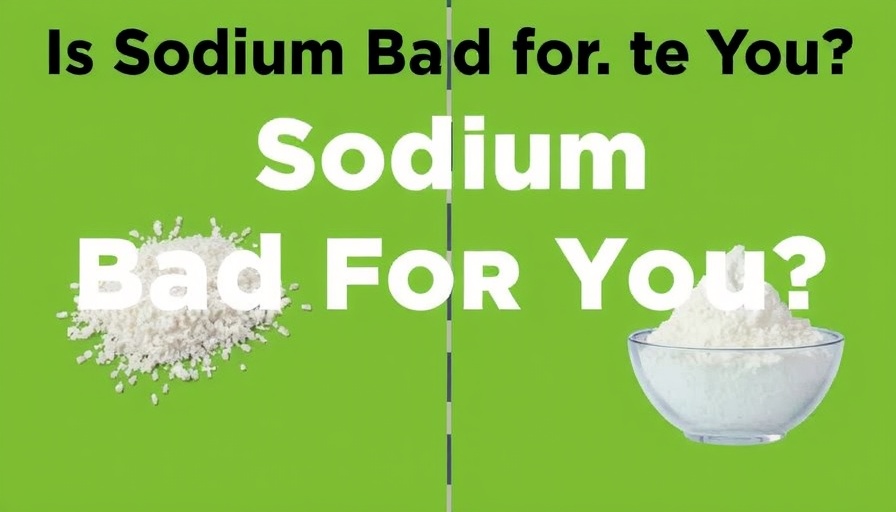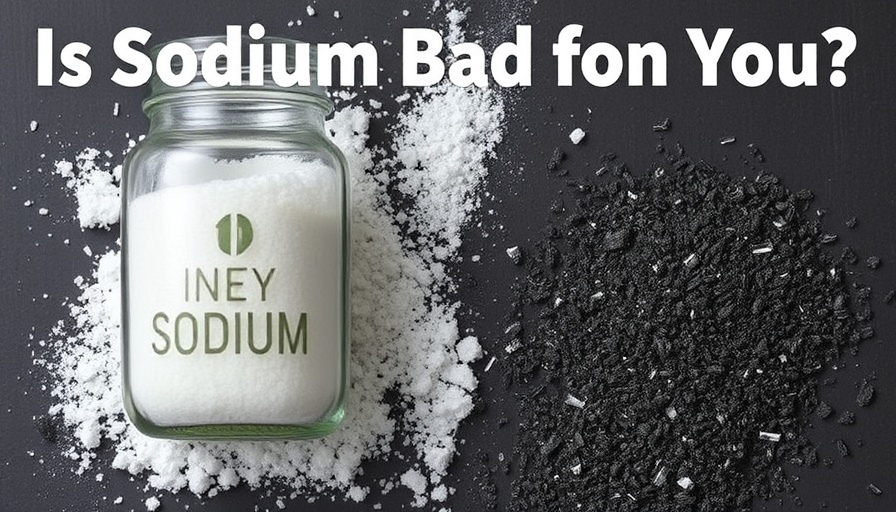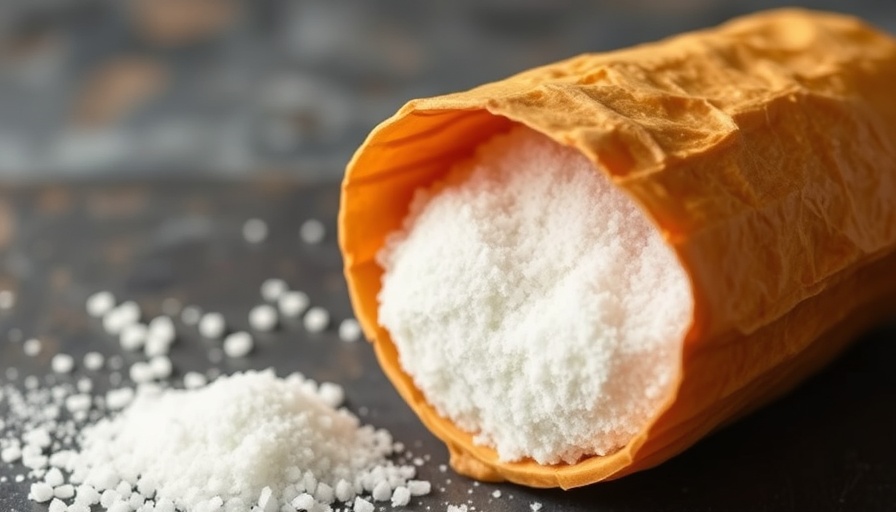
Understanding Sodium: The Good and the Bad
The debate around sodium is often clouded by misconceptions. While sodium is essential for body functions such as fluid balance and nerve transmission, consuming too much can lead to health issues like high blood pressure. For many, particularly parents and seniors, understanding these nuances is crucial. Sodium naturally occurs in many foods, but processed foods often contain significantly higher levels, making it easy to exceed recommended intake without realizing it.
Myth vs. Fact: What You Need to Know
Many people believe all sodium is harmful, but this oversimplification misses the mark. The body needs sodium to function, but the general recommendation is to limit intake to less than 2,300 mg a day. However, those with hypertension or certain health conditions may need to aim for even lower levels. It’s vital to focus on whole, unprocessed foods which can help manage sodium levels while also providing necessary nutrients.
The Hidden Sodium in Your Diet
Processed and packaged foods often hide sodium in unexpected places. For example, bread, sauces, and even certain dairy products can be high in sodium. It's important for homeowners and caregivers to read labels carefully and choose options with lower sodium content to better protect themselves and their families from potential hypertension.
Actionable Tips for Lower Sodium Living
Reducing sodium intake doesn’t mean compromising on flavor. Try seasoning meals with herbs and spices instead of salt or explore making homemade versions of your favorite condiments to control sodium levels. Cooking more at home can provide families greater control over what goes into their meals, making it easier to maintain a balanced diet.
Being aware of sodium intake is a proactive step toward healthier living. By making informed choices and understanding the facts about sodium, families can foster a healthier home environment.
 Add Row
Add Row  Add
Add 




 Add Row
Add Row  Add
Add 
Write A Comment